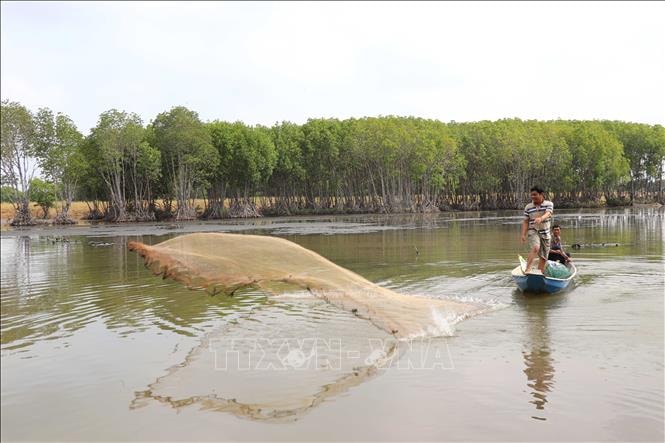
Director of the Department of Agriculture and Environment of Tra Vinh province, Tran Truong Giang, said that it is estimated that in the coastal areas of Cau Ngang, Duyen Hai districts, Duyen Hai town, Chau Thanh of the province, thousands of farming households have released aquatic breeds such as shrimp, sea crab, mullet, and sea bass to intercrop according to the forest - aquaculture model. This is a model that the agricultural sector encourages farmers who do not have the conditions to raise industrial shrimp using high technology to produce to ensure sustainable income. Over many years of production, the forest - aquaculture model has always brought a stable income of an average of about 100 - 120 million VND/ha/year.
Mr. Nguyen Van Lam, Long Khanh commune, Duyen Hai district shared that his family has been implementing the forest-shrimp model for many years. With an area of 4 hectares, he arranged to dig a pond and plant forest trees such as mangrove, tiger shrimp, and mam, with a ratio of 40% forest - 60% pond surface to create shade and shelter for shrimp and other aquatic species. Each year, he releases about 50,000 tiger shrimp and 6,000 sea crabs, along with natural fish sources such as mullet, sandfish, and sea bass from the natural environment into the shrimp pond. The entire farming process only costs money to buy the seeds, no veterinary medicine for aquatic products, and insignificant feed costs, so the annual income is over 200 million VND.
According to Mr. Lam, the method of combining forest - tiger shrimp - fish - sea crab farming also has the advantage of actively selecting tiger shrimp, fish, and crabs of type I size and weight to sell at high prices, without losing revenue when market prices drop. Ecologically farmed commercial aquatic products are always ordered by traders at a price 25 - 30% higher than industrially and semi-industrially farmed aquatic products. On average, 1 kg of tiger shrimp (10 - 12 shrimp/kg) raised ecologically has a stable price of 350,000 VND/kg, type I sea crabs and roe crabs have a price of 350,000 - 450,000 VND/kg (2 shrimp/kg).
Mr. Tran Quoc Doan, Head of the Department of Agriculture and Environment of Duyen Hai district, said that in addition to the forest-shrimp model, for more than 5 years now, many farmers in the district have diversified their aquaculture to replace the second or third shrimp crop of the year to adapt to climate change, still bringing quite high economic efficiency to farmers. Specifically, the model of raising blood cockles in improved extensive shrimp ponds in Duyen Hai district has an average yield of over 4.4 tons/ha. With the price of commercial blood cockles sold at 80,000 VND/kg, farmers earn a net profit of 145 million VND/ha after only 4 - 4.5 months of farming.
Or the model of raising 1 crop of black tiger shrimp - 1 crop of mussels in semi-intensive black tiger shrimp ponds increases profits by about 50 million VND/ha/crop. The model of raising mussels in shrimp ponds only costs money for the seeds, does not require care, and does not need to be fed because there is a source of organic sludge left at the bottom of the pond from the shrimp farming season, so the mussels still grow very well. On average, in an area of 1 hectare of shrimp pond, 80,000 - 90,000 mussels are raised. After 6 months of farming, the harvested mussel output is about 2 - 2.2 tons, sold at a price of 25,000 - 30,000 VND/kg.
According to Mr. Tran Truong Giang, by 2025, the province has set a target of achieving a coastal aquaculture output of more than 200,000 tons, contributing to the average annual growth rate of 5% in the added value of the aquaculture sector. The provincial agricultural sector will increase support for transferring science and technology applications in aquaculture to farmers to increase productivity and product quality. In addition to encouraging farmers to maintain the forest-aquaculture model area, the province has a policy for coastal localities to promote the exploitation of about 50,000 hectares of coastal land and 15,000 hectares of alluvial land and floating sandbanks to diversify aquaculture species, in order to create added value and help farmers increase their income sustainably.
Source: https://baotainguyenmoitruong.vn/nhan-rong-mo-hinh-da-dang-con-nuoi-thuy-san-cho-thu-nhap-ben-vung-387398.html


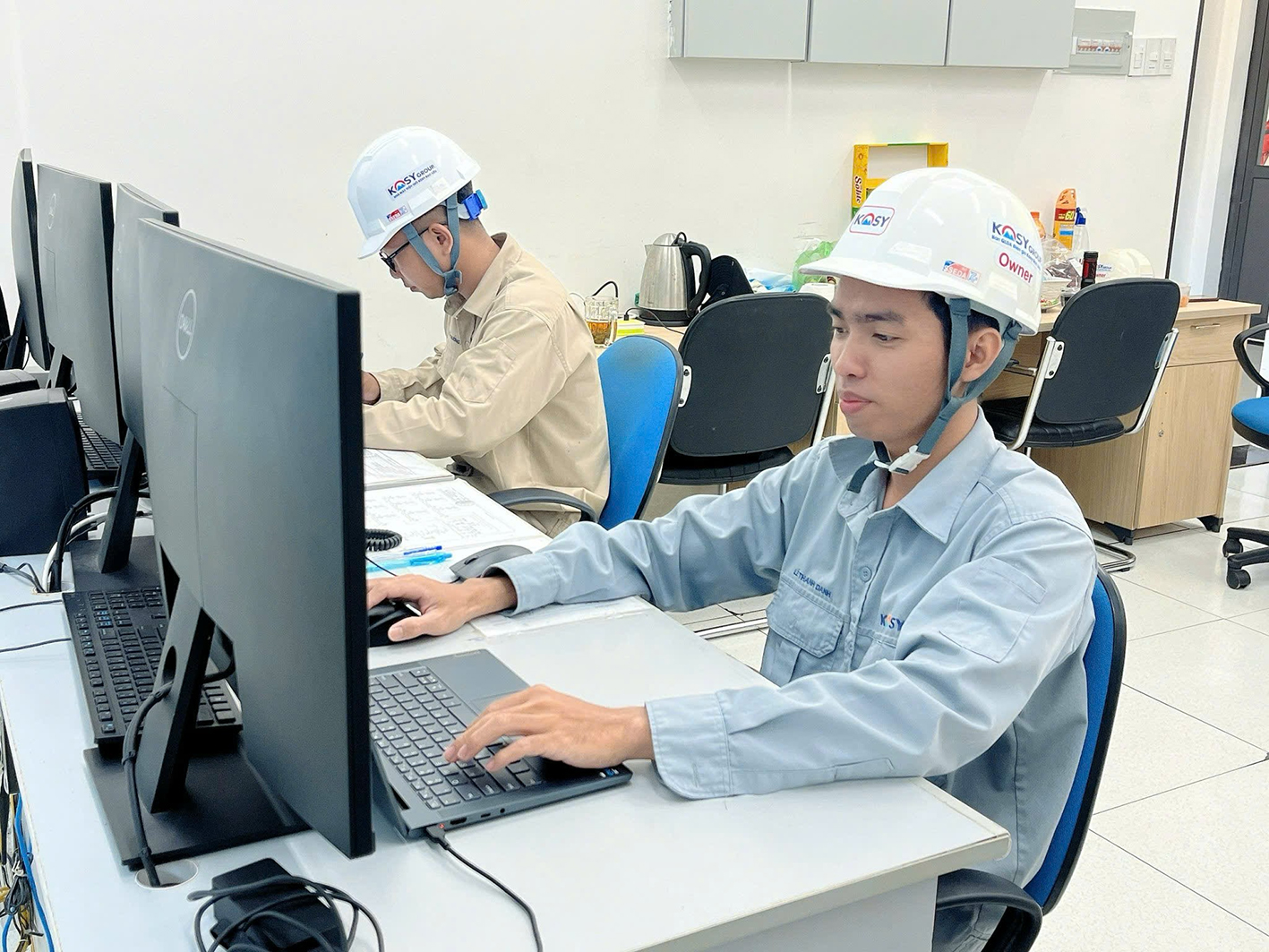

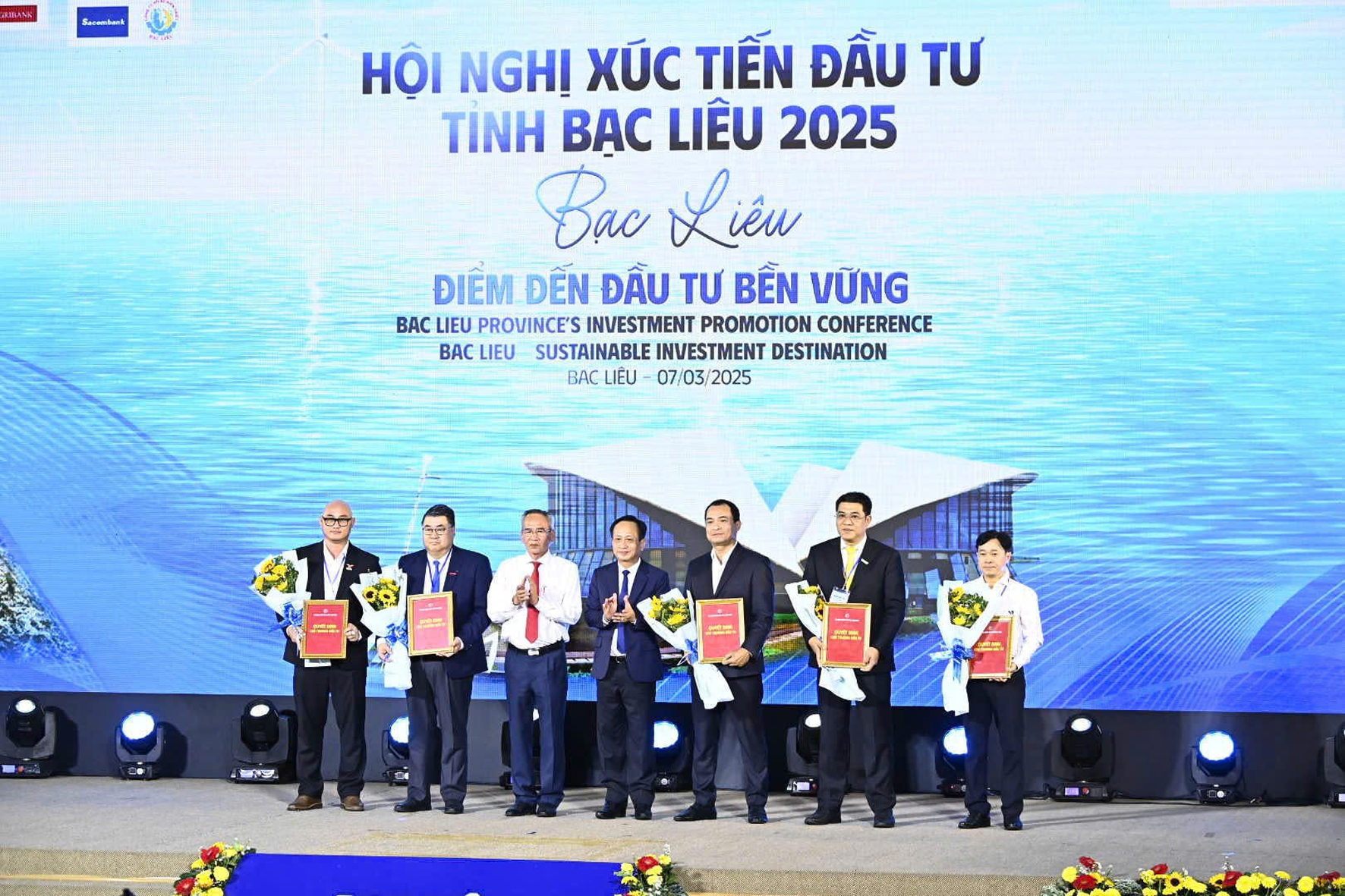

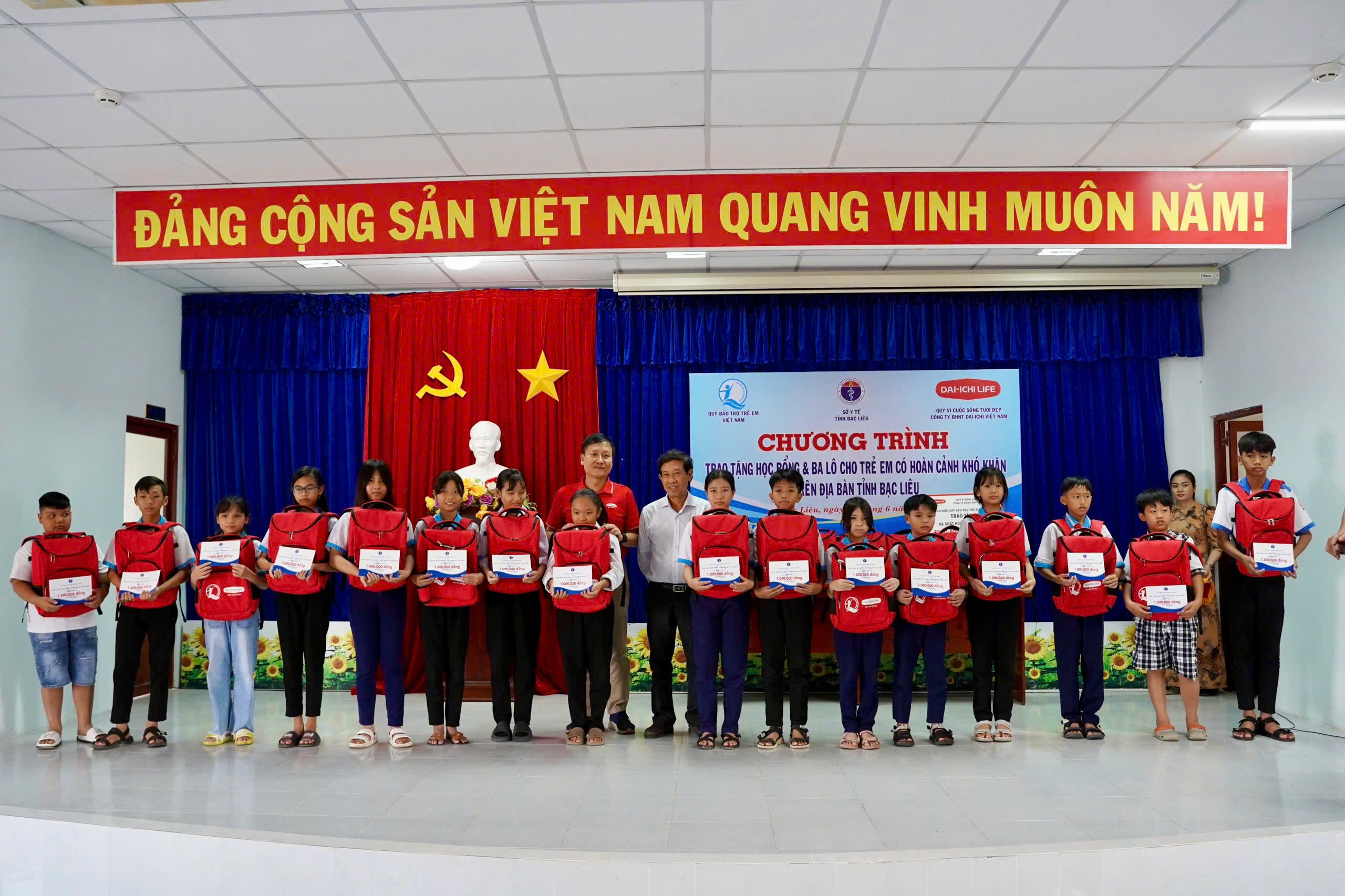
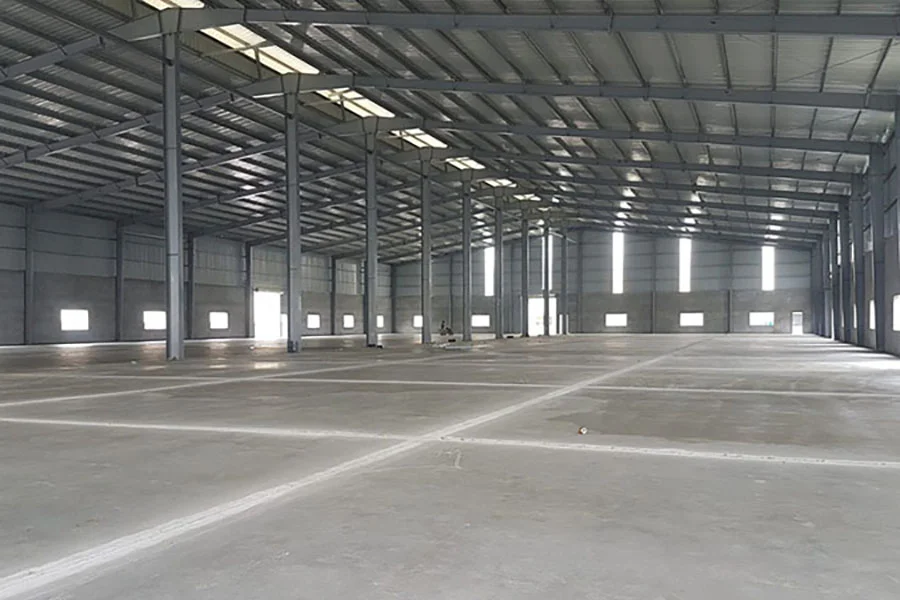

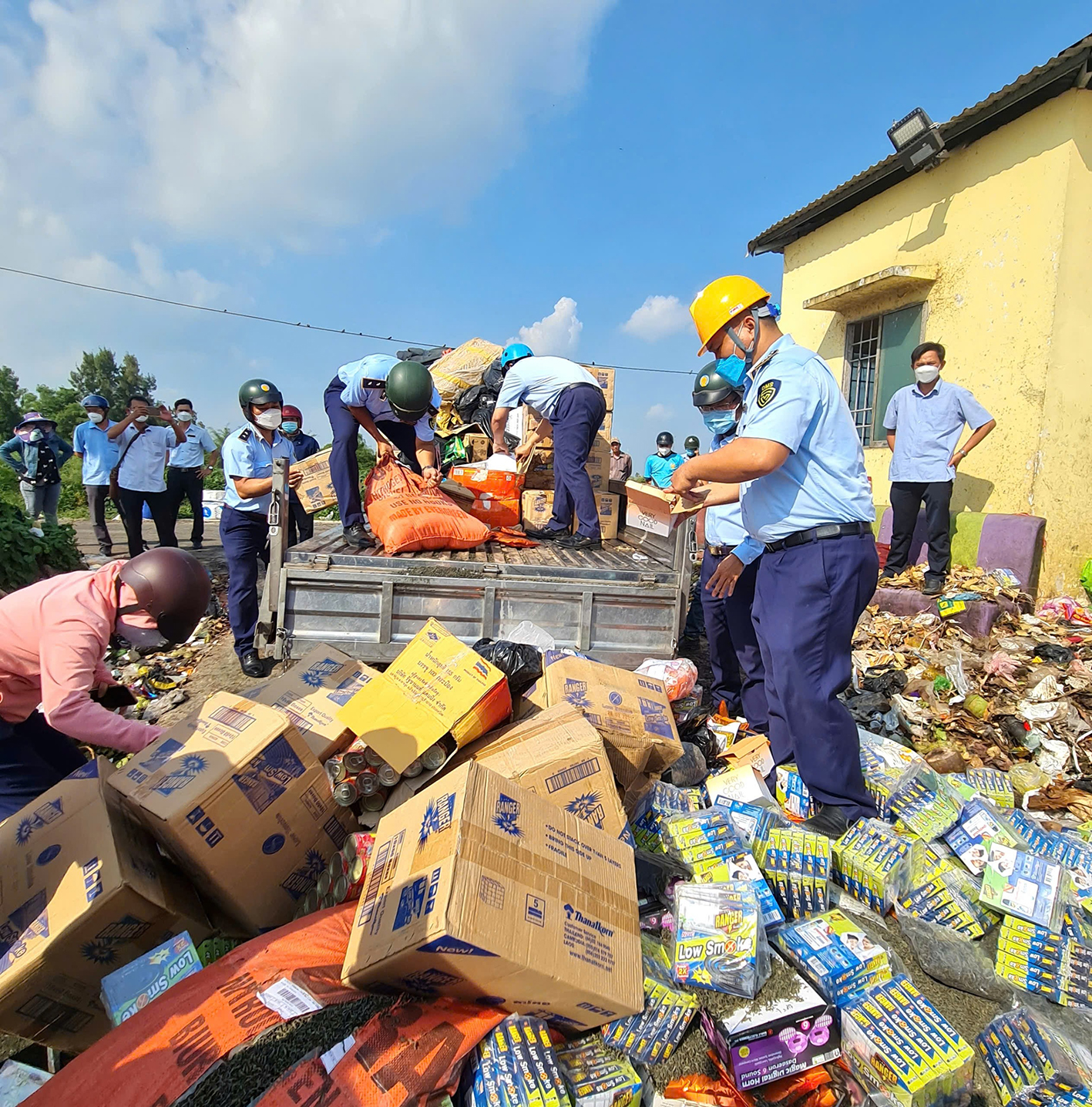













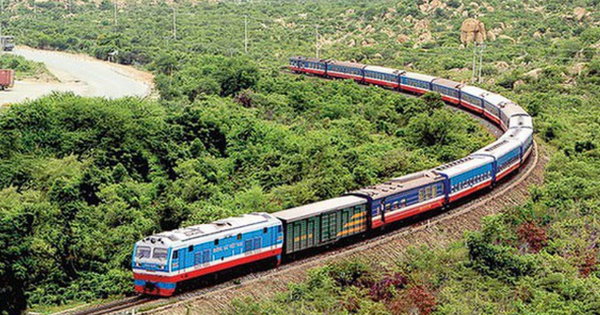
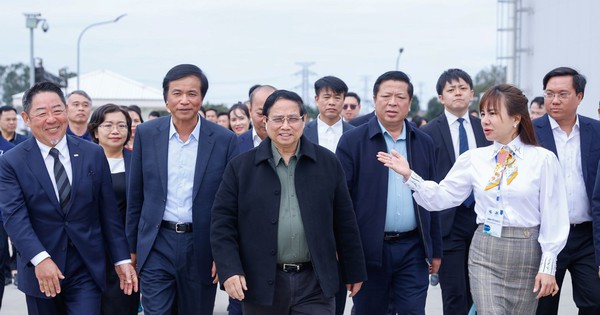



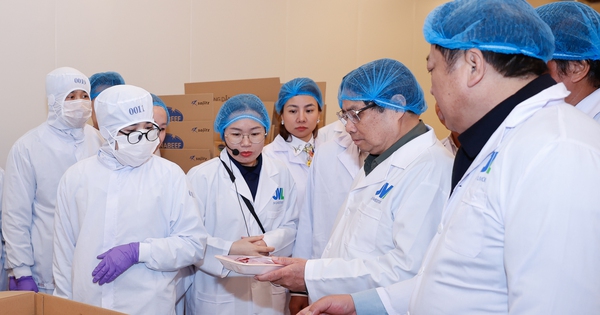

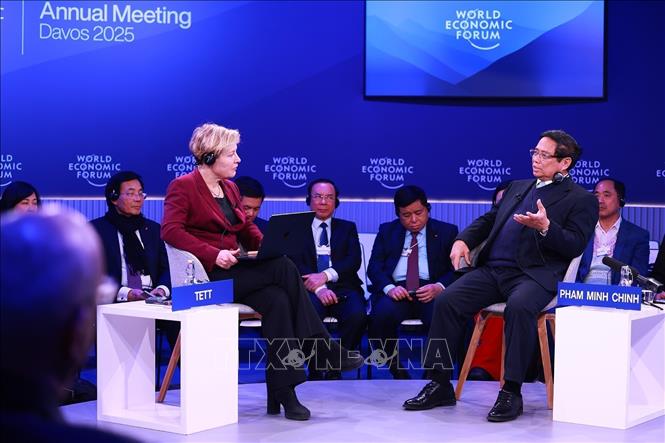

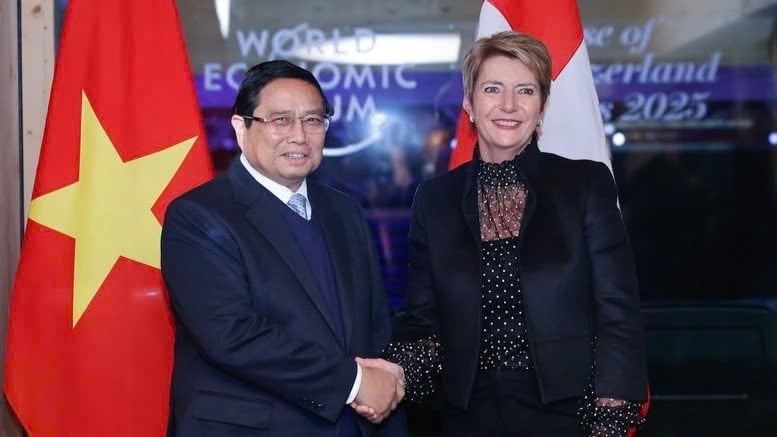

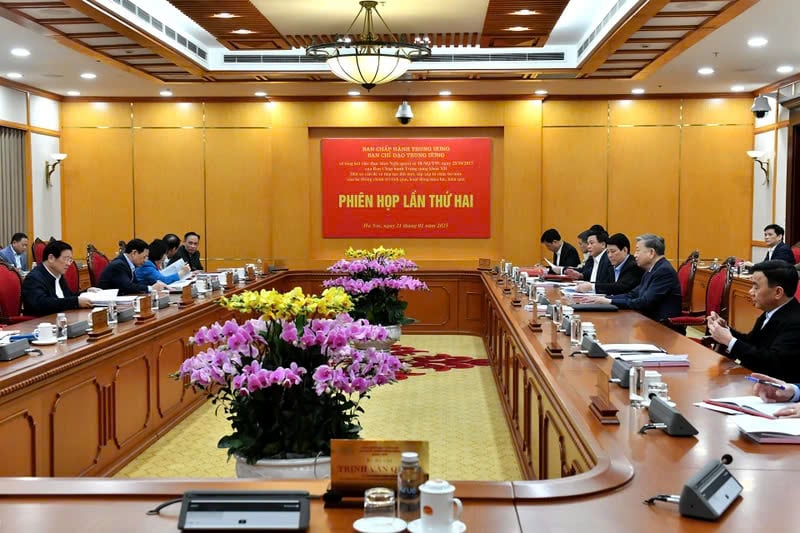





Comment (0)